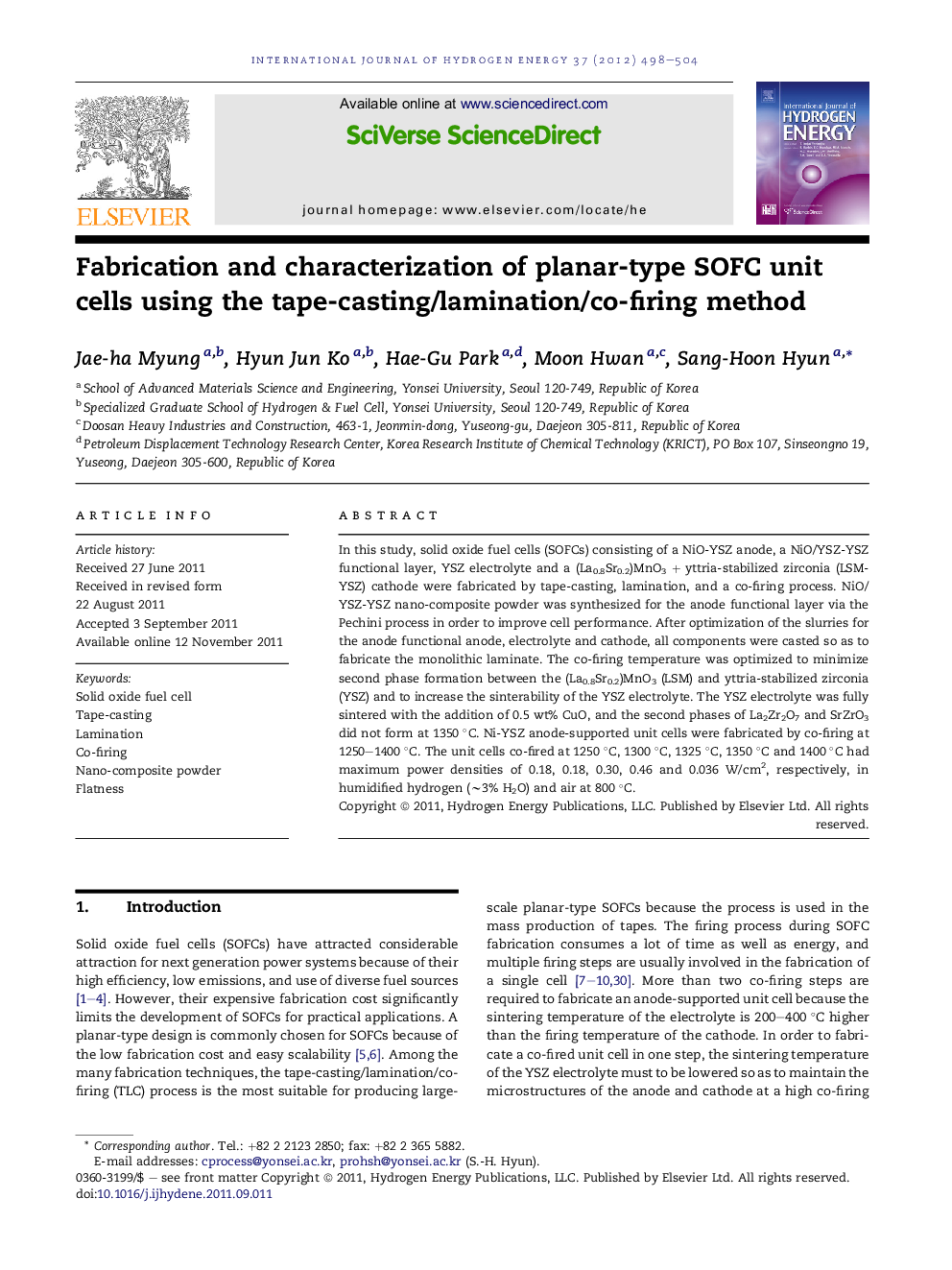| Article ID | Journal | Published Year | Pages | File Type |
|---|---|---|---|---|
| 1277163 | International Journal of Hydrogen Energy | 2012 | 7 Pages |
In this study, solid oxide fuel cells (SOFCs) consisting of a NiO-YSZ anode, a NiO/YSZ-YSZ functional layer, YSZ electrolyte and a (La0.8Sr0.2)MnO3 + yttria-stabilized zirconia (LSM-YSZ) cathode were fabricated by tape-casting, lamination, and a co-firing process. NiO/YSZ-YSZ nano-composite powder was synthesized for the anode functional layer via the Pechini process in order to improve cell performance. After optimization of the slurries for the anode functional anode, electrolyte and cathode, all components were casted so as to fabricate the monolithic laminate. The co-firing temperature was optimized to minimize second phase formation between the (La0.8Sr0.2)MnO3 (LSM) and yttria-stabilized zirconia (YSZ) and to increase the sinterability of the YSZ electrolyte. The YSZ electrolyte was fully sintered with the addition of 0.5 wt% CuO, and the second phases of La2Zr2O7 and SrZrO3 did not form at 1350 °C. Ni-YSZ anode-supported unit cells were fabricated by co-firing at 1250–1400 °C. The unit cells co-fired at 1250 °C, 1300 °C, 1325 °C, 1350 °C and 1400 °C had maximum power densities of 0.18, 0.18, 0.30, 0.46 and 0.036 W/cm2, respectively, in humidified hydrogen (∼3% H2O) and air at 800 °C.
► We fabricated anode-supported SOFC unit cells via tape-casting/lamination/co-firing method. ► Co-firing temperature was optimized to reduce 2nd phases formation in cathode. ► NiO/YSZ-YSZ nano-composite powders increased power density of co-fired unit cells. ► The unit cell co-fired at 1350 °C showed 0.46 W/cm2 and good stability over 100 hr.
